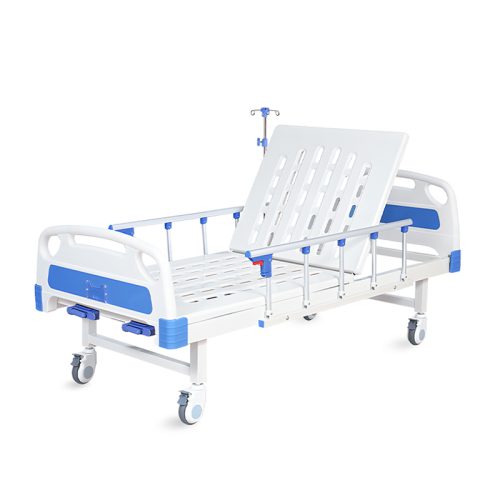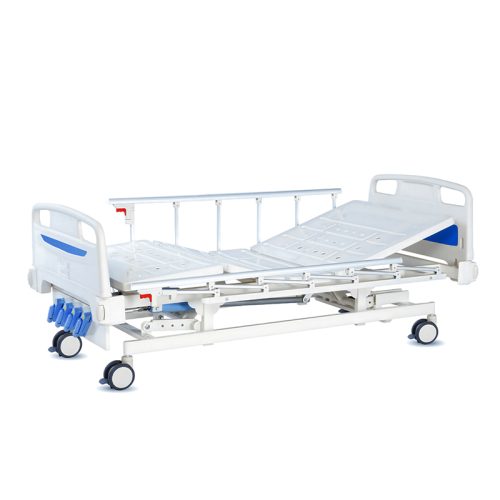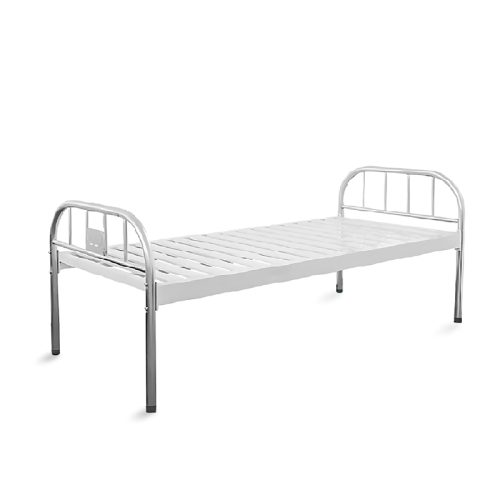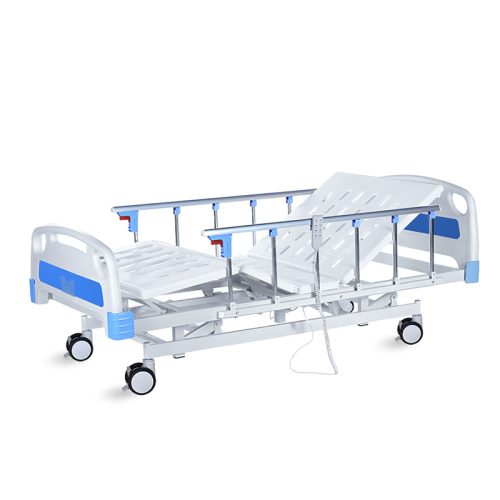
- Nemocniční lůžko
Matrace pro nemocniční lůžka: Zásadní pro pohodlí a bezpečnost při péči o pacienty
- Podle kelingmedical
The Importance of Hospital Bed Mattresses
Hospital bed mattresses differ from regular mattresses since they use specialized construction to help patients feel better and safer during medical treatments. Here are the key reasons why hospital bed mattresses are so important in healthcare:
Pressure Ulcer Prevention
Hospital beds depend on their mattresses to stop skin breakdown from pressure. Patients who stay in one position for too long without moving are likely to develop painful and dangerous skin ulcers. Hospital bed mattresses are designed to distribute body weight evenly across the surface which reduces pressure on vulnerable areas such as the hips heels and back to avoid developing bedsores.
Improved Comfort for Patients
People who lie in bed for long periods feel pain because standard mattresses do not properly support their body. Hospital bed mattresses are made to help patients sleep better and avoid developing muscle discomfort from lying in bed. Hospital bed mattresses help patients recover better because they let users adjust their position and feel comfortable thanks to their special materials.
Zvýšená bezpečnost
Hospital bed mattresses come with built-in safety elements that keep patients safe while they rest. Hospital mattresses are made to match hospital bed specifications and their gripping surface prevents the mattress from moving around. Hospital bed mattresses are built to resist fire so patients remain safe when emergencies happen.
Improved Mobility and Positioning
Patients in medical facilities need help moving from one position to another. Mattresses that work with adjustable beds help healthcare providers move patients to right positions and avoid complications during treatment. When patients need better breathing, less swelling or better blood flow the nurse can change the bed’s top or bottom part.
Types of Hospital Bed Mattresses
Different hospital bed mattresses exist to match the healthcare requirements of each patient. Hospital bed mattresses come in different types made from various materials and designed with specific functions. Here are the most common types of hospital bed mattresses:
Innerspring Mattresses
Traditional hospital beds often use innerspring mattresses which have metal coils for support. These mattresses are mainly used in regular hospital wards and create a strong sleeping surface for patients. Innerspring mattresses hold up well under pressure but they lack the needed support for patients who are at risk of developing pressure ulcers.
Pěnové matrace
Patients choose foam hospital beds because they offer good comfort at a low price. Mattresses made from foam layers can be built to offer different levels of support from soft to firm. A foam mattress with high density works best to support patients and reduce the risk of developing bedsores. Patients find foam mattresses simple to clean and move because they weigh less.
Gel Mattresses
The gel layer in gel mattresses spreads weight evenly over the mattress surface. Patients at high risk of developing pressure ulcers benefit most from gel mattresses because the gel layer reduces pressure points effectively. Gel mattresses are commonly found in hospital rooms because they help prevent pressure sores in patients who need to stay in one place.
Air Mattresses
Hospital beds now use air mattresses with air cells that doctors can adjust to match each patient’s specific support needs. The mattresses can stop pressure ulcers from developing and make patients feel better because they let users adjust the support level. The air cells inside these air mattresses work in an alternating pattern to move weight around and stop bedsores from forming.
Low Air Loss Mattresses
Low air loss mattresses work differently than regular air mattresses because they have special air channels that let air pass through them. By distributing air across the mattress surface the system keeps patients cool and dry which stops moisture from building up and harming their skin. Doctors use low air loss mattresses mainly for treating critically ill patients and people with sensitive skin.
Alternating Pressure Mattresses
The alternating air cells of pressure mattresses inflate and deflate in a cycle to evenly spread weight and stop bedsores from developing. Patients with high bedsores risk need these beds because they change air distribution to reduce pressure damage. In long-term care facilities alternating pressure mattresses work best because they support patients who must stay in bed for many days.
Understanding What Makes a Hospital Bed Mattress the Best Fit
Hospital staff must select appropriate mattress types to help patients feel better and avoid injury. Here are some factors to consider when choosing a hospital bed mattress:
Patient’s Condition and Risk Level
People who cannot move or are at risk of getting bedsores need mattresses that distribute weight evenly and protect against skin damage. When patients need special support air mattresses or gel mattresses with low air loss technology work best. People with regular hospital stays or temporary patients can use basic foam or innerspring mattresses.
Mattress Size and Compatibility
Hospital bed mattresses need to match the dimensions of your hospital bed frame when you purchase them. You need to verify both the hospital bed and mattress dimensions because most standard beds measure 36 inches wide by 80 inches long.
Nastavitelnost
When your hospital bed moves parts you need to choose a mattress that fits the adjustments without issues. The right adjustable bed mattresses move and stretch to maintain their support features while keeping you comfortable.
Ease of Maintenance
Hospital beds need to have mattresses that simplify hygiene upkeep. Mattresses with washable covers work best because they let you keep your space clean and stop germs from developing.
Distributors who provide hospital bed mattresses gain advantages from their business.
Medical equipment distributors should stock various hospital bed mattresses to serve healthcare facilities better. Here are some strategies to succeed in the hospital bed mattress market:
Offer a Range of Mattress Types
Distributors help healthcare providers find the right mattress for each patient when they stock multiple hospital bed mattress types including foam gel air and low air loss options. Different patients need different bed materials and our range lets us serve every patient care need.
Provide Mattress Accessories
Distributors can sell hospital bed mattresses alongside complementary products like mattress covers and pressure-relieving padding. Accessories help the mattress perform better while making patients feel more comfortable and secure.
Emphasize Quality and Durability
Hospital beds require mattresses that handle constant usage while supplying steady support for extended periods. Healthcare providers choose reliable products so distributors must supply mattresses that perform well over time.
Poskytování možností přizpůsobení
Healthcare providers need special mattresses made to order for their unique patient requirements. Distributors can better serve healthcare facilities by letting them choose between different support levels and making beds suitable for bariatric patients.
Závěr:
Hospital bed mattresses are necessary for helping patients recover and feel good while staying safe. Specialized mattresses for hospitals and care settings reduce pressure on patients while improving movement and preventing skin damage. Medical equipment distributors serve healthcare providers better when they supply multiple types of hospital bed mattresses.
When healthcare providers buy hospital bed mattresses they must match the product to their patients’ requirements. Healthcare facilities trust medical equipment distributors more when they provide different mattress choices plus top-quality products with customization services.
Are you prepared to start selling hospital bed mattresses? Call us now to see our selection of advanced mattresses for medical use and private homes.
📧 E-mail: inquiry@shkeling.com
🌐 Webové stránky: www.shkeling.com.cn
Těšíme se na úspěšné partnerství s vámi!






